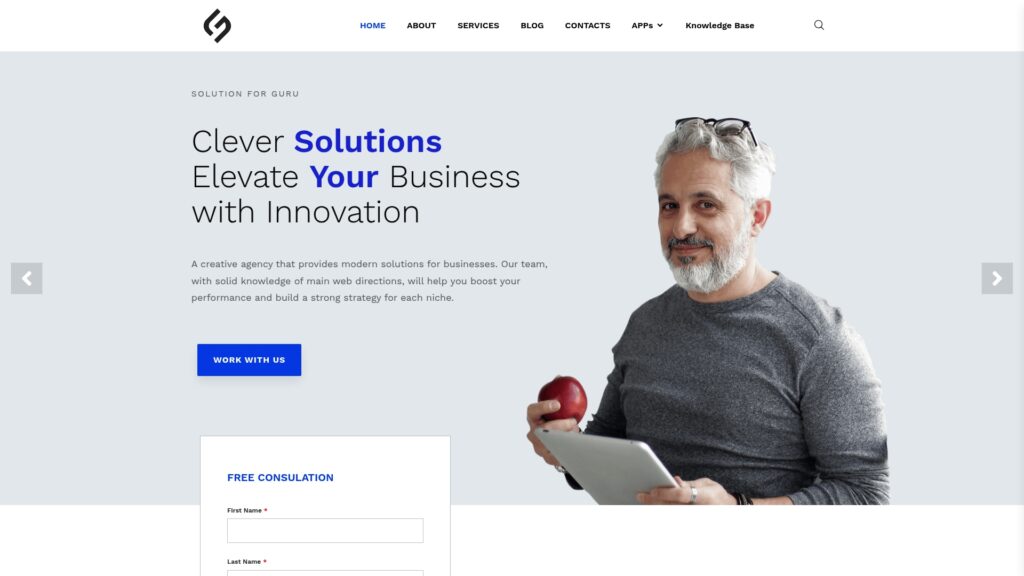What Are the Auto Insurance Laws and Requirements by State?

Auto insurance is not just a financial safety net – it’s a legal requirement in nearly every state across America. However, navigating the complex landscape of state – specific insurance regulations can be overwhelming for drivers. Each state has established its own minimum coverage requirements, liability limits, and enforcement mechanisms, creating a patchwork of laws that vary significantly from coast to coast. Understanding these requirements is essential for staying compliant, avoiding penalties, and ensuring adequate protection on the road.
Table of Contents
- Quick summary
- Why Do Car Insurance Laws Vary by State in the US?
- How Do Major Insurance Providers Address State-Specific Requirements?
- What Are the Different Types of Auto Insurance Systems?
- What Minimum Coverage Do States Require?
- Which States Have Unique Insurance Requirements?
- How Do No-Fault vs. At-Fault States Differ?
- What Are the Penalties for Driving Without Insurance?
- How Can You Choose the Right Coverage for Your State?
- What Should You Know Before Purchasing Auto Insurance?
- Summing up
- Frequently Asked Questions
- Enhancing Your Insurance Knowledge with Solution for Guru
Quick summary
Understanding auto insurance requirements doesn’t have to be complicated. Here’s what you need to know at a glance:
Mandatory vs. Optional States: Nearly all states require drivers to carry auto insurance, with only New Hampshire and Virginia offering limited exceptions. Furthermore, these exceptions come with specific conditions and financial responsibility requirements.
Minimum Liability Coverage: Most states mandate bodily injury liability and property damage liability coverage. Consequently, typical minimum requirements range from 25/50/25 to 50/100/50, representing thousands of dollars in coverage per person, per accident, and for property damage.
No-Fault States: Twelve states operate under no-fault insurance systems, requiring Personal Injury Protection (PIP) coverage. Therefore, drivers in these states file claims with their own insurance companies regardless of who caused the accident.
Uninsured Motorist Coverage: Approximately 20 states require uninsured/underinsured motorist coverage to protect drivers from those who lack adequate insurance.
Proof of Insurance: All states require drivers to carry proof of insurance while operating a vehicle. Additionally, electronic proof is now accepted in most jurisdictions.
| Coverage Type | States Requiring | Typical Minimum |
|---|---|---|
| Bodily Injury Liability | 49 states | $25,000-$50,000 per person |
| Property Damage Liability | 49 states | $10,000-$25,000 per accident |
| Personal Injury Protection | 12 states | $2,500-$50,000 |
| Uninsured Motorist | ~20 states | Varies by state |
Why Do Car Insurance Laws Vary by State in the US?
The variation in auto insurance laws across states stems from fundamental principles of American governance and regional differences. Understanding these reasons helps explain why insurance requirements can differ so dramatically.
Constitutional Framework and State Authority
The United States Constitution grants individual states significant autonomy in regulating insurance matters. Consequently, each state’s legislature has the power to establish its own insurance requirements based on local needs, demographics, and policy priorities. This decentralized approach reflects the broader American principle of federalism, where states maintain sovereignty over matters not explicitly delegated to the federal government.
Regional Economic Differences
States with higher costs of living typically require higher minimum coverage amounts. For instance, northeastern states often mandate more comprehensive coverage compared to rural states where medical costs and vehicle repair expenses may be lower. Moreover, states with higher rates of uninsured drivers tend to implement stricter enforcement mechanisms and higher penalties.
Historical Legal Precedents
Many states developed their insurance frameworks based on historical legal cases and local tort law traditions. Some states adopted no-fault systems during the 1970s to reduce litigation costs, while others maintained traditional tort-based systems. These historical decisions continue to influence current insurance requirements.
Political and Cultural Factors
State political climates significantly impact insurance regulation. States with more consumer-protection-oriented legislatures may require higher coverage minimums, while those favoring minimal government intervention might maintain lower requirements. Additionally, cultural attitudes toward personal responsibility and risk management shape policy decisions.
Economic Impact Considerations
States must balance consumer protection with affordability. Therefore, legislators consider factors such as average income levels, unemployment rates, and the economic burden of insurance premiums when establishing requirements. States with lower median incomes might maintain lower minimums to ensure insurance remains accessible.
How Do Major Insurance Providers Address State-Specific Requirements?
Leading insurance companies have developed sophisticated systems to navigate the complex landscape of state-specific requirements. Understanding how these providers operate can help consumers make informed decisions.
BiBerk: Specialized Coverage Solutions

BiBerk has established itself as a provider focusing on small business and commercial auto insurance needs across multiple states. The company specifically addresses state-specific requirements by offering customizable policies that automatically adjust to meet minimum legal standards in each jurisdiction. Moreover, BiBerk’s digital platform streamlines the process of obtaining state-compliant coverage, making it particularly attractive for business owners managing fleets across state lines.
BiBerk’s approach emphasizes flexibility and compliance, ensuring that businesses maintain proper coverage regardless of where their vehicles operate. Furthermore, the company provides educational resources helping clients understand varying state requirements and select appropriate coverage levels beyond statutory minimums.
Progressive: Technology-Driven State Compliance

Progressive has pioneered technology-driven solutions for managing state-specific insurance requirements. Through their sophisticated digital platform, Progressive automatically calculates and adjusts coverage to meet each state’s minimum requirements while offering easy upgrades for enhanced protection. Additionally, the company’s Snapshot program and mobile app provide state-specific features and resources.
Progressive operates in all 50 states, maintaining expert knowledge of each jurisdiction’s unique requirements. Consequently, their customer service representatives receive specialized training on state-specific regulations, ensuring accurate guidance for policyholders. The company also offers comparative tools allowing customers to see how coverage options differ across state lines, which proves invaluable for those relocating or frequently traveling.
Infinity Auto: Focus on Underserved Markets

Infinity Auto Insurance specializes in serving drivers who may face challenges obtaining coverage through traditional providers. The company addresses state-specific requirements by offering flexible payment options and coverage configurations that meet minimum legal standards while remaining affordable. Particularly, Infinity focuses on states with higher percentages of high-risk drivers or those with previous insurance lapses.
Infinity’s state-specific approach includes understanding local demographic needs and economic conditions. Therefore, the company designs products that comply with mandatory requirements while providing options for drivers to enhance protection as their financial situations improve. Their expertise in non-standard auto insurance makes them particularly relevant in states with strict SR-22 or FR-44 requirements.
Next – Auto Insurance US: Modern Digital Solutions

Next – Auto Insurance US represents the emerging wave of digital-first insurance providers addressing state requirements through streamlined online platforms. The company leverages artificial intelligence and data analytics to instantly determine state-specific requirements and generate compliant quotes. Furthermore, Next emphasizes transparency by clearly explaining how coverage meets or exceeds each state’s minimums.
This provider’s digital approach particularly appeals to tech-savvy consumers who value convenience and speed. Next maintains real-time updates on regulatory changes across states, ensuring policies remain compliant as laws evolve. Additionally, the platform provides instant policy documents and digital proof of insurance cards accepted in all states.
What Are the Different Types of Auto Insurance Systems?
Understanding the fundamental insurance systems operating across states helps drivers comprehend their rights and obligations. Each system reflects different philosophical approaches to accident compensation and liability.
Traditional Tort-Based Systems
Most states operate under traditional tort-based insurance systems where the at-fault driver bears financial responsibility for damages. Under this system, drivers must carry liability insurance to cover harm they cause to others. Moreover, accident victims can file claims against the at-fault driver’s insurance or pursue legal action to recover damages.
Tort systems emphasize personal accountability and allow injured parties to seek compensation for both economic and non-economic damages, including pain and suffering. However, this approach can lead to lengthy litigation and higher insurance premiums in some jurisdictions.
No-Fault Insurance Systems
Twelve states have adopted no-fault insurance systems designed to reduce litigation and expedite claim payments. In these states, drivers file claims with their own insurance companies regardless of fault, receiving compensation through Personal Injury Protection (PIP) coverage. Consequently, lawsuits are restricted unless injuries exceed certain thresholds defined by state law.
No-fault states include Florida, Hawaii, Kansas, Kentucky, Massachusetts, Michigan, Minnesota, New Jersey, New York, North Dakota, Pennsylvania, and Utah. Additionally, these states maintain specific requirements for PIP coverage amounts and conditions under which policyholders can step outside the no-fault system to file lawsuits.
Choice No-Fault Systems
Several states offer choice no-fault systems, allowing drivers to select between traditional tort and no-fault coverage. Kentucky, New Jersey, and Pennsylvania provide this option, giving consumers flexibility based on their preferences and risk tolerance. Therefore, drivers can choose lower premiums with restricted lawsuit rights or higher premiums with full tort protection.
Add-On PIP States
Some states require PIP coverage without restricting the right to sue, creating an “add-on” system. These states combine elements of both traditional tort and no-fault approaches. Arkansas, Delaware, Maryland, Oregon, Texas, and Washington fall into this category, mandating PIP while preserving full litigation rights.
What Minimum Coverage Do States Require?
State minimum coverage requirements vary considerably, reflecting different approaches to balancing consumer protection with affordability. Understanding these minimums is crucial for legal compliance.
Bodily Injury Liability Coverage
Bodily injury liability covers medical expenses, lost wages, and other costs when you injure someone in an at-fault accident. States typically express these limits using a split-limit format such as 25/50, meaning $25,000 per person and $50,000 per accident. However, requirements range significantly:
Lower-Requirement States: California, Louisiana, and others require minimums of 15/30, providing $15,000 per person and $30,000 per accident. Nevertheless, these amounts often prove inadequate for serious accidents.
Mid-Range States: Most states mandate 25/50 or 50/100 coverage, representing moderate protection levels. Additionally, these states balance affordability with reasonable injury compensation.
Higher-Requirement States: Alaska and Maine require 50/100 minimums, reflecting higher costs of medical care and stronger consumer protection policies. Furthermore, these states recognize that lower limits leave drivers financially vulnerable.
| State Examples | Bodily Injury Minimum |
|---|---|
| California, Louisiana | 15/30 ($15k/$30k) |
| Texas, Florida | 30/60 ($30k/$60k) |
| Alaska, Maine | 50/100 ($50k/$100k) |
Property Damage Liability Coverage
Property damage liability covers damage to other vehicles, buildings, and property when you’re at-fault. Minimum requirements typically range from $5,000 to $25,000 per accident. Significantly, these amounts may seem adequate for minor accidents but can prove insufficient for multi-vehicle collisions or damage to expensive vehicles.
States like California require only $5,000 in property damage coverage, while others mandate $25,000 or more. Therefore, many insurance professionals recommend purchasing limits well above state minimums to ensure adequate protection.
Personal Injury Protection (PIP)
No-fault and add-on states require PIP coverage, which pays for medical expenses, lost wages, and related costs regardless of fault. PIP minimums vary dramatically:
- Michigan: Historically required unlimited PIP, though recent reforms allow drivers to choose lower limits
- Florida: Requires $10,000 in PIP coverage
- New York: Mandates $50,000 in PIP benefits
- Kansas: Requires $4,500 in basic coverage
Moreover, PIP coverage often includes benefits for funeral expenses, rehabilitation costs, and substitute services like childcare or housekeeping when injuries prevent policyholders from performing these tasks.
Uninsured/Underinsured Motorist Coverage
Approximately 20 states mandate uninsured motorist (UM) and underinsured motorist (UIM) coverage, protecting drivers when at-fault parties lack adequate insurance. Consequently, these requirements address the significant problem of uninsured drivers, estimated at 13% nationally.
UM/UIM coverage typically mirrors bodily injury liability limits, though some states allow drivers to reject this coverage in writing. Additionally, this protection proves particularly valuable in states with high uninsured driver rates.
Which States Have Unique Insurance Requirements?

Several states have implemented distinctive insurance requirements that set them apart from standard regulatory approaches. Understanding these unique provisions is essential for drivers in these jurisdictions.
New Hampshire: The Optional Insurance Exception
New Hampshire stands alone as the only state not requiring auto insurance for most drivers. Nevertheless, the state enforces strict financial responsibility laws. Drivers must demonstrate ability to pay for damages they cause, either through insurance or personal assets. Furthermore, New Hampshire requires insurance for drivers with certain violations or after at-fault accidents.
Despite optional insurance, most New Hampshire residents maintain coverage due to lender requirements and the financial risk of driving uninsured. Additionally, the state requires non-residents to carry insurance meeting their home state’s requirements.
Virginia: Pay-to-Play Alternative
Virginia offers a unique alternative to mandatory insurance: drivers can pay a $500 annual Uninsured Motor Vehicle (UMV) fee. However, this fee doesn’t provide any coverage – it simply grants legal permission to drive uninsured. Consequently, drivers choosing this option remain personally liable for all damages they cause.
Most Virginia drivers opt for insurance rather than the UMV fee, as even minimum coverage provides significantly more protection than personal liability. Moreover, the fee must be paid annually and doesn’t reduce if the driver subsequently purchases insurance.
Michigan: Historic Unlimited PIP Reform
Michigan previously required unlimited lifetime Personal Injury Protection coverage, making it the most comprehensive but expensive system nationally. However, 2019 reforms allowed drivers to choose PIP limits, including options to opt-out entirely if covered by qualifying health insurance. Therefore, Michigan drivers now have more flexibility, though this has sparked debates about adequate injury protection.
The reforms significantly impacted insurance rates, with many drivers experiencing premium reductions. Nevertheless, consumer advocates warn that lower PIP limits may leave some drivers financially vulnerable after serious accidents.
Florida: Complex No-Fault System
Florida operates a unique no-fault system requiring only $10,000 in PIP and $10,000 in property damage liability. Surprisingly, the state doesn’t mandate bodily injury liability coverage for most drivers. Consequently, Florida has one of the highest rates of uninsured motorists and frequent litigation over coverage disputes.
This unusual approach has made Florida a challenging insurance market. Additionally, the state has considered numerous reform proposals to address high premiums and fraud concerns.
How Do No-Fault vs. At-Fault States Differ?
The distinction between no-fault and at-fault insurance systems fundamentally affects how accident claims are handled and what coverage drivers need. Understanding these differences helps drivers navigate the claims process effectively.
At-Fault (Tort) State Characteristics
In at-fault states, the driver who causes an accident bears financial responsibility for all resulting damages. Victims can file third-party claims against the at-fault driver’s liability insurance or pursue lawsuits to recover compensation. Moreover, at-fault systems preserve full rights to sue for damages including pain and suffering.
Advantages of At-Fault Systems:
- Complete compensation rights for innocent victims
- Personal accountability for negligent drivers
- Flexibility in pursuing maximum compensation
- No restrictions on lawsuit rights
Disadvantages of At-Fault Systems:
- Lengthy claim resolution processes
- Increased litigation costs
- Higher insurance premiums in some areas
- Potential delays in receiving compensation
No-Fault State Characteristics
No-fault states require drivers to carry PIP coverage and file claims with their own insurance companies regardless of who caused the accident. Consequently, the system reduces litigation by limiting lawsuit rights to cases meeting specific injury thresholds. These thresholds typically involve permanent injury, significant disfigurement, or medical expenses exceeding statutory amounts.
Advantages of No-Fault Systems:
- Faster claim payments and resolution
- Reduced litigation costs
- Guaranteed compensation regardless of fault determination
- Lower administrative expenses
Disadvantages of No-Fault Systems:
- Limited ability to sue for pain and suffering
- Potentially insufficient PIP limits for serious injuries
- Higher premiums due to mandatory PIP coverage
- Complexity in understanding lawsuit thresholds
Hybrid and Choice Systems
Several states have created hybrid systems combining elements of both approaches. Kentucky, New Jersey, and Pennsylvania allow drivers to choose between limited tort (no-fault) and full tort options. Additionally, these choice systems provide flexibility but require consumers to understand the trade-offs between premium costs and litigation rights.
States with add-on PIP maintain full lawsuit rights while requiring basic first-party coverage. Therefore, these jurisdictions seek to balance quick compensation with comprehensive victim rights.
Impact on Insurance Shopping
Understanding your state’s system is crucial when shopping for insurance. In at-fault states, liability coverage quality becomes paramount since you may face lawsuits. BiBerk emphasizes this consideration for commercial clients, ensuring businesses maintain adequate liability protection. Conversely, no-fault states require careful PIP selection, with Progressive offering tools to compare coverage options and costs.
Infinity Auto specializes in helping drivers understand their state’s system and select appropriate coverage levels. Furthermore, Next – Auto Insurance US provides state-specific educational resources explaining how local laws affect coverage needs and claim processes.
What Are the Penalties for Driving Without Insurance?

States enforce auto insurance requirements through various penalties designed to encourage compliance and protect other motorists. Understanding these consequences emphasizes the importance of maintaining continuous coverage.
Fines and Financial Penalties
Monetary penalties for driving without insurance vary significantly by state and circumstances. First offenses typically result in fines ranging from $100 to $500, while subsequent violations may incur fines exceeding $5,000. Moreover, many states assess daily fines for each day a vehicle remains uninsured and registered.
California, for example, imposes fines starting at $100 for first offenses, increasing to $200-$500 for subsequent violations. Additionally, drivers may face civil penalty assessments doubling or tripling the initial fine amount. Meanwhile, states like Michigan and New York impose more severe financial consequences, with fines potentially reaching several thousand dollars.
License and Registration Suspension
Most states suspend driver’s licenses and vehicle registrations for uninsured motorists. Consequently, suspension periods typically range from 30 days to one year for first offenses, with longer periods for repeat violations. Furthermore, reinstatement requires proof of insurance, payment of all fines, and often additional reinstatement fees ranging from $50 to $500.
During suspension periods, driving privileges are completely revoked. Therefore, drivers caught operating vehicles during suspension face additional criminal charges, extended suspension periods, and potential vehicle impoundment. Progressive and other major insurers emphasize the importance of continuous coverage to avoid these serious consequences.
SR-22 and FR-44 Requirements
High-risk drivers often must file SR-22 or FR-44 certificates, which are proof-of-insurance forms insurers submit directly to state DMVs. These requirements typically last three to five years and result in significantly higher insurance premiums. Moreover, any coverage lapse during the filing period resets the clock, requiring drivers to start the entire filing period over.
Infinity Auto specializes in SR-22 insurance, helping drivers meet these requirements while finding the most affordable coverage options. Additionally, the company provides services ensuring timely filings and preventing lapses that could extend filing obligations.
Vehicle Impoundment
Many states authorize law enforcement to impound vehicles operated without insurance. Impoundment fees typically start at $100-$200 plus daily storage charges of $20-$50. Consequently, recovering an impounded vehicle can cost several hundred dollars. Furthermore, extended impoundment periods may result in vehicles being sold at auction to cover storage costs.
Criminal Penalties
Some states classify driving without insurance as a misdemeanor criminal offense, particularly for repeat offenders. Criminal convictions may result in probation, community service, or even short jail sentences in extreme cases. Additionally, criminal records can affect employment opportunities and increase insurance rates for years.
Impact on Accident Liability
Uninsured drivers involved in accidents face personal liability for all damages, potentially resulting in wage garnishment, property liens, or bankruptcy. Moreover, many states restrict uninsured at-fault drivers from recovering damages even if another party shares fault. BiBerk emphasizes this risk for business owners, noting that uninsured commercial vehicles expose businesses to catastrophic financial liability.
How Can You Choose the Right Coverage for Your State?
Selecting appropriate auto insurance involves balancing state requirements with personal financial protection needs. Understanding key considerations helps drivers make informed decisions.
Assessing State Minimum vs. Adequate Coverage
While meeting state minimums ensures legal compliance, these requirements often provide insufficient protection. Medical costs for serious injuries frequently exceed minimum bodily injury limits, while property damage to multiple vehicles or expensive cars can surpass minimum property damage coverage. Therefore, insurance professionals typically recommend substantially higher limits.
Progressive‘s insurance experts suggest considering 100/300/100 coverage as a more practical minimum, providing $100,000 per person for bodily injury, $300,000 per accident, and $100,000 for property damage. Additionally, drivers with significant assets should consider even higher limits to protect against lawsuits seeking personal assets.
Evaluating Personal Financial Risk
Your insurance needs depend heavily on personal financial circumstances. Drivers with substantial assets face greater risk from lawsuits and should carry higher liability limits. Moreover, those with minimal assets might focus on protecting income through adequate PIP or medical payments coverage.
Consider these factors when assessing risk:
- Total net worth including home equity and retirement accounts
- Annual income and earning potential
- Number of drivers in household and their experience levels
- Vehicle value and replacement cost
- Commute distance and annual mileage
- Driving record and likelihood of claims
Understanding Available Coverage Types
Beyond state-required coverage, several optional protections enhance financial security:
Collision Coverage: Pays for damage to your vehicle regardless of fault, essential for newer or financed vehicles. Furthermore, lenders typically require this coverage until loans are paid.
Comprehensive Coverage: Covers non-collision damage such as theft, vandalism, weather, or animal strikes. Additionally, this protection proves valuable in areas prone to natural disasters or high crime rates.
Medical Payments Coverage: Provides additional medical expense coverage beyond PIP in no-fault states or as primary medical protection in at-fault states. Consequently, this coverage helps fill gaps in health insurance.
Rental Reimbursement: Pays for rental vehicle expenses while your car is being repaired after a covered loss, preventing out-of-pocket costs during repairs.
Roadside Assistance: Covers towing, flat tire changes, lockout services, and other emergency assistance, providing peace of mind during breakdowns.
Comparing Provider Options
Different insurers specialize in various market segments and offer distinct advantages. BiBerk excels in commercial auto insurance with flexible multi-state coverage for businesses. Progressive provides comprehensive tools for comparing options and customizing coverage. Infinity Auto focuses on high-risk drivers and those rebuilding insurance history. Next – Auto Insurance US offers streamlined digital experiences for tech-focused consumers.
Therefore, comparing multiple providers ensures you find the best combination of coverage, price, and service quality. Additionally, working with independent agents provides access to multiple companies simultaneously, simplifying comparison shopping.
Considering Deductibles and Premium Costs
Deductibles significantly impact premium costs. Higher deductibles reduce premiums but increase out-of-pocket expenses when filing claims. Moreover, drivers should select deductibles they can comfortably afford during emergencies rather than maximizing deductible amounts purely to reduce premiums.
Furthermore, various discounts can substantially reduce costs:
- Multi-policy bundling with home or renters insurance
- Good driver discounts for clean records
- Good student discounts for young drivers maintaining high grades
- Safety feature discounts for vehicles with advanced safety systems
- Low mileage discounts for limited annual driving
- Automatic payment and paperless billing discounts
What Should You Know Before Purchasing Auto Insurance?
Making informed insurance decisions requires understanding several critical factors beyond basic coverage types and state requirements. Preparation ensures you select policies that truly meet your needs.
Researching Insurer Financial Strength
Insurance is only as reliable as the company providing it. Therefore, research insurers’ financial stability through ratings from agencies like AM Best, Moody’s, and Standard & Poor’s. Companies with ratings of “A” or better demonstrate strong financial health and claim-paying ability.
Additionally, investigate complaint ratios through state insurance departments and organizations like the National Association of Insurance Commissioners (NAIC). Companies with low complaint ratios relative to their market share typically provide better customer service and claims experiences.
Understanding Policy Exclusions and Limitations
All insurance policies contain exclusions limiting coverage under specific circumstances. Common exclusions include:
- Intentional acts and criminal activity
- Racing or competitive driving
- Commercial use beyond policy terms
- Drivers not listed on the policy
- Damage from wear and tear or mechanical failure
Moreover, understanding these limitations prevents surprise claim denials. BiBerk particularly emphasizes reviewing commercial policy exclusions to ensure business activities remain covered. Furthermore, Progressive provides detailed policy documentation helping customers understand coverage boundaries.
Reviewing Claims Process and Customer Service
Research how insurers handle claims before purchasing coverage. Read customer reviews focusing on claims experiences, noting response times, communication quality, and settlement fairness. Additionally, ask potential insurers about their claims process:
- Average claim processing times
- Availability of 24/7 claims reporting
- Network of approved repair shops
- Direct repair arrangements
- Mobile claims apps and digital tools
Infinity Auto has streamlined its claims process specifically for its customer base, offering flexible communication options and personalized support. Similarly, Next – Auto Insurance US emphasizes digital claims management through user-friendly mobile applications.
Considering Usage-Based Insurance Programs
Many insurers now offer usage-based or telematics programs monitoring driving behavior through mobile apps or plug-in devices. These programs potentially reduce premiums for safe drivers while providing feedback on driving habits. However, they also raise privacy concerns and may increase rates for drivers with riskier behaviors.
Progressive’s Snapshot program pioneered this approach, tracking factors like:
- Miles driven
- Time of day driving occurs
- Hard braking frequency
- Rapid acceleration
- Speed relative to traffic conditions
Consequently, drivers confident in their safe driving habits may benefit substantially from these programs. Nevertheless, those uncomfortable with monitoring should opt for traditional rating approaches.
Planning for Life Changes
Insurance needs evolve with life circumstances. Consider how anticipated changes might affect coverage requirements:
- Adding teen drivers significantly increases premiums but provides essential protection
- Marriage may qualify for multi-policy discounts
- Moving to new states requires policy adjustments for different requirements
- Purchasing new vehicles necessitates comprehensive and collision coverage
- Retirement and reduced driving may qualify for low-mileage discounts
Furthermore, regularly reviewing coverage annually or after major life events ensures policies remain appropriate. Many insurers, including BiBerk and Progressive, offer annual policy reviews helping customers optimize coverage as circumstances change.
Summing up
Navigating auto insurance laws and requirements across the United States requires understanding both state-specific regulations and personal protection needs. While state minimums provide a legal baseline, they often fall short of adequate financial protection in serious accidents. Therefore, informed drivers balance compliance with comprehensive coverage addressing their unique risk profiles.
The diversity in state requirements reflects America’s federal system, where each state determines its approach to insurance regulation based on local needs, economic conditions, and policy priorities. Consequently, drivers must familiarize themselves with their state’s specific requirements while recognizing that minimum compliance doesn’t guarantee sufficient protection.
Major insurance providers have adapted to this complex landscape through specialized services and innovative solutions. BiBerk offers flexible commercial coverage for businesses operating across multiple states, ensuring consistent protection regardless of jurisdiction. Progressive leverages technology to simplify state-specific requirements while providing robust comparison tools and usage-based options. Infinity Auto specializes in serving drivers facing coverage challenges, including those requiring SR-22 filings or rebuilding insurance histories. Next – Auto Insurance US represents the digital-first future of insurance, streamlining state compliance through intuitive online platforms.
Understanding the distinction between at-fault and no-fault systems is crucial for selecting appropriate coverage and navigating the claims process effectively. Moreover, recognizing the severe penalties for driving uninsured emphasizes the importance of maintaining continuous coverage and meeting all state requirements.
The investment in adequate auto insurance extends beyond legal compliance – it provides peace of mind, financial security, and protection for your family’s future. Therefore, take time to understand your state’s requirements, evaluate your personal risk factors, and select coverage meeting both legal standards and practical protection needs.
Frequently Asked Questions
When relocating to a new state, you must update your insurance policy to meet the new state’s requirements, typically within 30 to 90 days of establishing residency. Contact your insurance provider immediately upon moving to ensure compliance. Most major insurers, including BiBerk, Progressive, Infinity Auto, and Next – Auto Insurance US, operate in multiple states and can adjust your coverage seamlessly. However, premiums may change based on the new state’s requirements, risk factors, and average claim costs. Additionally, you’ll need to register your vehicle and obtain a new driver’s license in your new state within specified timeframes, which typically require proof of insurance meeting local standards. Failing to update your insurance and registration can result in penalties, including fines and coverage gaps that leave you financially vulnerable.
Several strategies can lower premiums without sacrificing protection. First, increase deductibles on comprehensive and collision coverage, reducing premiums while maintaining the same coverage limits. However, ensure you can afford the higher out-of-pocket costs if filing a claim. Second, bundle multiple policies with the same insurer, as combining auto with home or renters insurance typically qualifies for multi-policy discounts of 10-25%. Third, maintain a clean driving record, as violations and at-fault accidents significantly increase rates. Fourth, take advantage of available discounts such as good student discounts, low mileage programs, safety feature credits, and automatic payment discounts. Progressive’s Snapshot program and similar usage-based options from other providers can substantially reduce costs for safe drivers. Fifth, regularly compare quotes from multiple providers including BiBerk, Infinity Auto, and Next – Auto Insurance US, as rates vary significantly between companies. Finally, consider slightly older vehicles that don’t require comprehensive and collision coverage, as these optional coverages often represent significant premium portions. Remember that adequate liability coverage remains essential regardless of vehicle value, protecting your assets from lawsuit judgments.
Enhancing Your Insurance Knowledge with Solution for Guru
Understanding auto insurance requirements represents just the beginning of building comprehensive financial protection. Solution for Guru (https://www.solution4guru.com/) specializes in providing expert guidance on insurance matters, helping consumers navigate complex regulatory landscapes and make informed decisions.
The company offers personalized consultations addressing your specific state requirements, risk factors, and coverage options. Moreover, Solution for Guru maintains current expertise on evolving state regulations, ensuring clients receive accurate, up-to-date information. Their services include policy reviews, comparative analysis of provider options, and strategies for optimizing coverage while managing costs.

Additionally, Solution for Guru provides educational resources and ongoing support, empowering clients to make confident insurance decisions throughout their lives. Whether you’re purchasing your first policy, relocating to a new state, or reassessing coverage after major life changes, their expertise ensures you maintain appropriate protection while maximizing value.
Partnering with Solution for Guru complements the services provided by carriers like BiBerk, Progressive, Infinity Auto, and Next – Auto Insurance US, creating a comprehensive approach to insurance management. Therefore, consider consulting their experts to develop a personalized insurance strategy meeting your unique needs and circumstances.
Recommended
- Full Coverage vs. Liability: Which Auto Insurance Is Right for You?
- What’s Covered and What’s Not: Breaking Down Auto Insurance Coverage Types
- What Are the Best Auto Insurance Options for Rideshare Drivers (Uber, Lyft, etc.)?
- How to Get Affordable Auto Insurance After an Accident or Ticket
- Auto and Renters Insurance Bundle
- Preferred Auto Insurance Companies
- How to Get Auto Insurance Online
- Auto Insurance for Farms
- Auto International Insurance
- Comparing Commercial Auto Insurance
- The Top Commercial Auto Insurance Options



